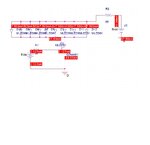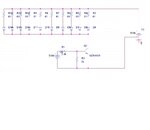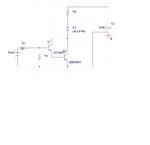kdg007
Full Member level 3
my main object is ..i have 10LEDs i want equal current for all leds with the transistor 2N4401.i came up with this circuit design but not sure which one is a proper way.
Led forward voltage = 1.4(approx in pspice),
Led maximum current for each = 20ma
Vce=0.4
Vbe=0.75
i am thinking the base current is too less for the comparing with collector current(since 1b = 1c/10)

forgot to include R3 resistor (3k) from base to ground ..
so,which approach is better >?i need to recalculate values according to that...i need to built a circuit which can give sufficent current for all 10 leds but i have to use only 2N4401 transistors...any suggestions ?
Led forward voltage = 1.4(approx in pspice),
Led maximum current for each = 20ma
Vce=0.4
Vbe=0.75
i am thinking the base current is too less for the comparing with collector current(since 1b = 1c/10)

forgot to include R3 resistor (3k) from base to ground ..
so,which approach is better >?i need to recalculate values according to that...i need to built a circuit which can give sufficent current for all 10 leds but i have to use only 2N4401 transistors...any suggestions ?
Last edited:

